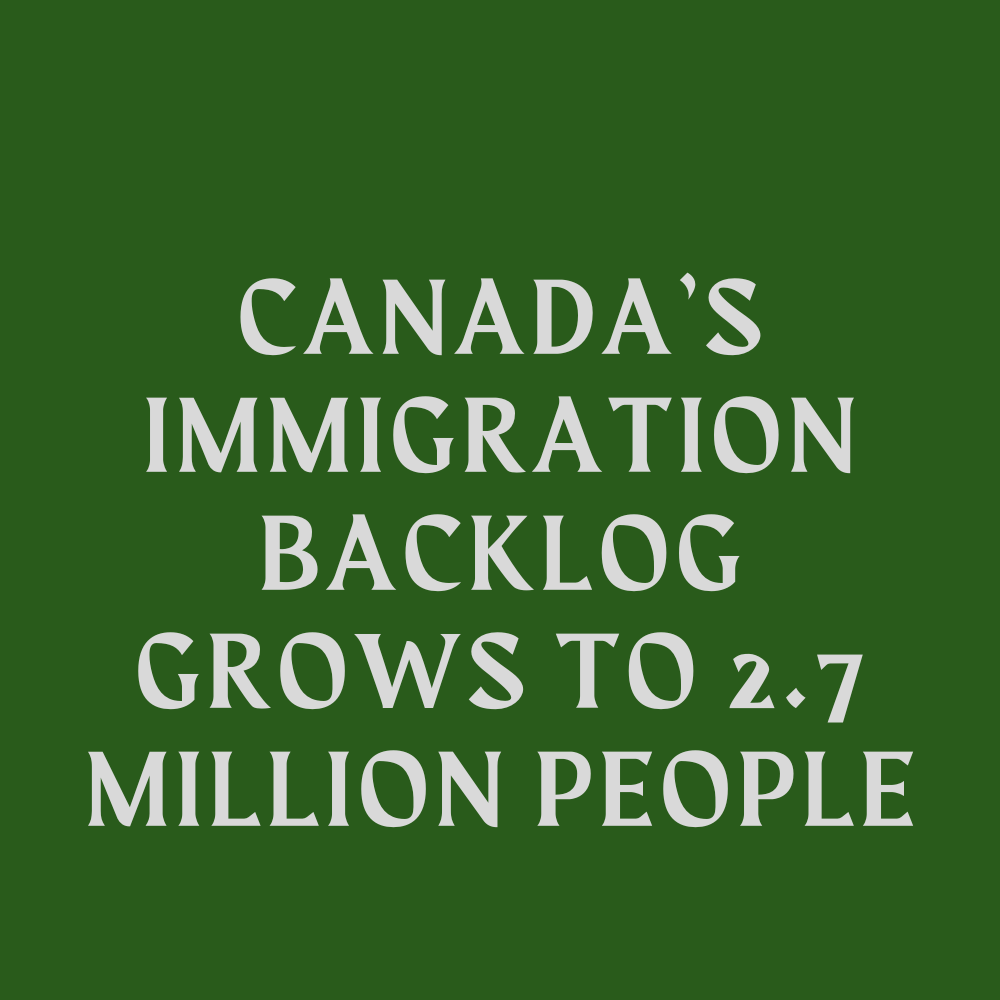The backlog has grownup by nearly 300,000 individuals since June.
Canada continues to struggle with its immigration applications as its inventory currently stands at some 2.7 million individuals.
Check Your Score on CRS Calculator
This represents a growth of nearly 300,000 individuals over the past six weeks.
The backlog has nearly doubled over the past year and nearly tripled since the beginning of the pandemic.
It has progressed as follows since last July:
July 15-17, 2022: 2,679,031 persons
June 1-6, 2022: 2,387,884 persons
April 30-May 2, 2022: 2,130,385 persons
April 11-12, 2022: 2,031,589 persons
March 15 and 17, 2022: 1,844,424 persons
February 1, 2022: 1,815,628 persons
December 15, 2021: 1,813,144 persons
October 27, 2021: 1,792,404 persons
July 6, 2021: 1,447,474 persons
The citizenship inventory stands at 444,792 candidates as of July 15, compared to 394,664 on June 1.
The permanent residence inventory stands at 514,116 individuals as of July 17, compared to 522,047 as of June 6.
On July 17, the temporary residence inventory stood at 1,720,123 people, compared to 1,471,173 persons, additionally as of June 6.
CIC News created this information request to Immigration, Refugees and Citizenship Canada (IRCC) on June 30 and received the data on July 18.
Express Entry draws resume thanks to backlog reduction
A total of 51,616 express Entry applicants are waiting on choices as of July 17, a significant reduction from the 88,903 reported when comparable was out there on March 15.
The reduction in express Entry backlogs suggests that IRCC will once again hold all program draws, and processing times for new express Entry candidates applicants back to the six-month standard. On July 6, IRCC command its first all-program draw since Dec 2020.
Family class inventory is up slightly
The overall inventory of family class applicants is up to 118,251 persons compared to 112,837 persons on June 6.
The Spouses, Partners and Children Program inventory has increased compared to early June. It stands at 68,159 persons compared to 67,929 persons last month. The figure for July was found by adding Spouses and Partners to Children and Other Family Class for the purpose of comparison.
The Parents and Grandparents Program (PGP) has seen another increase. It is now at 47,025 persons compared to 41,802 persons. IRCC has yet to announce details on its plans for the PGP 2022.
Summer backlog growth is normal, to an extent
The temporary residence inventory has increased by nearly 250,000 persons compared to June 6.
Increases were observed within the range of candidates for study permits, temporary resident visas, traveler records, work permits, and work permit extensions.
The growth of IRCC’s backlog is normal to an extent over the summer months. more individuals look to get temporary resident visas to visit family and friends throughout the warmest time of the year in Canada.
In addition, several international students who complete their studies within the spring go on to apply for Post-Graduation Work Permits (PGWP), that is Canada’s largest work permit category.
Most international students also submit their study permit applications in the months leading up to the start of Canada’s academic calendar. This results in Canada usually welcoming over 200,000 new international students leading into September each year.
The main exception is that the Canada-Ukraine Authorization for Emergency Travel (CUAET), that Canada introduced in March to supply Ukrainians with the chance to relocate following Russia’s invasion. Since march 17, IRCC has received 362,664 CUAET applications, causing its backlog to swell.
However, the growth of the backlog, a virtually three-fold increase since the beginning of the pandemic in March 2020, highlights current challenges with Canada’s immigration system. it’s a function of IRCC continuing to welcome new applications throughout the pandemic despite the fact that its process capability was restricted for large stretches of 2020 and 2021.
The department is currently taking part in catch-up and is taking steps like hiring extra process employees and looking out to speculate in technological upgrades.
Meanwhile, other arms of the federal government have taken notice of Canada’s immigration application challenges.
In May, the Canadian Parliament’s standing committee on Citizenship and Immigration (CIMM) began a study on the backlogs. it’ll lead to a public study containing recommendations for improvement.
In June, Prime Minister Justin Trudeau created a federal task force to handle backlog challenges. it’s created of a group of federal ministers, who can build recommendations to handle problems that are causing the delay in application process. The goal is to make each long-term and short-run solutions which will clear the backlogs and improve the standard and speed of services.
